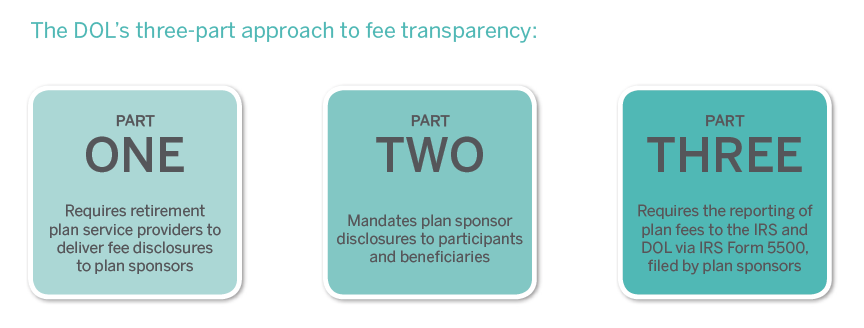Change is here
SCOTT NEEB 25-Sep-2019

Sometimes it feels like it takes a large team to support a single retirement plan: advisors, administrators, trustees, and other service providers. Each service provider must be paid for their services.
As the retirement industry has evolved—shifting from defined benefit plans to defined contribution plans—service providers every so often delegate or share some of their responsibilities with other expert parties, including sharing the revenue associated with that service.
This trend has improved efficiency and reduced the cost of administrative services and benefits for plans and plan participants.
However, it can make it hard for plan fiduciaries and participants to understand how much they are paying for plan services and to whom, which is why the Department of Labor (DOL) launched a fee transparency initiative to expand fee disclosure requirements and to develop educational information and other resources to help plan sponsors and participants understand retirement plan fees.

Fee transparency reigns
The first part of the DOL’s fee transparency initiative—known as the ERISA Section 408(b)(2) regulations—requires service providers to disclose feeds to plan sponsors. This is designed to ensure that each plan fiduciary receives the information they need to assess the reasonableness of service provider fees and identify any potential conflicts of interest before entering a service relationship.
The second part of the DOL’s initiative—the ERISA 404a-5 participant fee disclosure regulations—are designed to ensure plan participants have the information they need to make informed decisions about the management and investment of their retirement accounts. The plan sponsor, assuming they are serving as the ERISA plan administrator, is responsible for providing the participant disclosure, typically with the assistance of their record-keeper or other service provider.
The third part of the DOL’s disclosure initiative expanded the direct and indirect fee information that must be reported on Schedule C of IRS Form 5500. Schedule C is only required for plans with 100 or more participants and is designed to help plan sponsors gather data on and analyze the fees paid for plan services.




